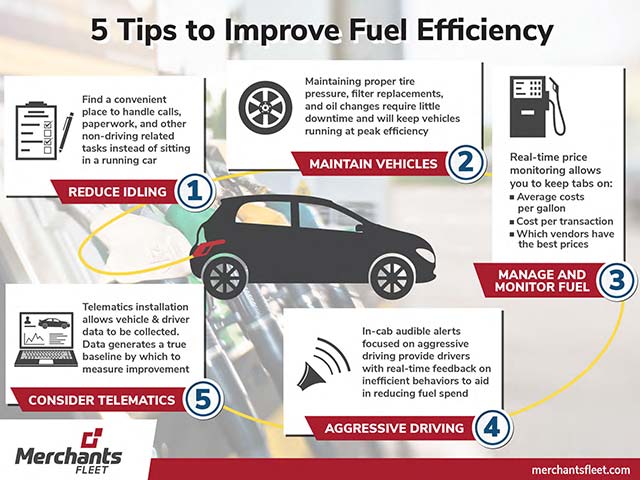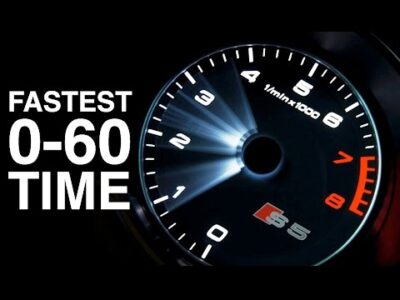
Maximizing Fuel Efficiency in Your Fiat 500

The Fiat 500 is a stylish and fuel-efficient vehicle, making it an excellent choice for city driving. However, to get the most out of your Fiat 500, it's essential to maximize its fuel efficiency. With rising fuel costs and growing environmental concerns, optimizing your vehicle's performance can have a significant impact on both your wallet and the environment. By implementing a few simple strategies, you can improve your Fiat 500's fuel efficiency, reduce emissions, and enjoy a more cost-effective driving experience. Proper maintenance and driving habits can greatly enhance your vehicle's overall performance.
Tips for Maximizing Fuel Efficiency in Your Fiat 500
To maximize fuel efficiency in your Fiat 500, it's essential to understand the factors that affect fuel consumption and implement strategies to minimize them. The Fiat 500 is known for its fuel efficiency, but with the right techniques, you can further reduce your fuel costs and lower your carbon footprint. By maintaining your vehicle properly, adopting efficient driving habits, and optimizing your vehicle's configuration, you can significantly improve its fuel efficiency.
Regular Maintenance for Optimal Fuel Efficiency
Regular maintenance is crucial for maintaining optimal fuel efficiency in your Fiat 500. This includes regular oil changes, tire pressure checks, and air filter replacements. By keeping your vehicle well-maintained, you can ensure that it runs smoothly and efficiently, which can lead to significant fuel savings. For example, a clogged air filter can decrease fuel efficiency by up to 20%, while underinflated tires can increase fuel consumption by up to 3%.
Efficient Driving Habits for Better Fuel Economy
Adopting efficient driving habits is another key strategy for maximizing fuel efficiency in your Fiat 500. This includes driving at moderate speeds, avoiding sudden acceleration, and using cruise control on the highway. By driving smoothly and consistently, you can reduce fuel consumption and lower your emissions. For instance, driving at a constant speed of 60 mph can improve fuel efficiency by up to 20% compared to driving at 70 mph.
Optimizing Your Fiat 500's Configuration for Fuel Efficiency
Optimizing your Fiat 500's configuration can also play a significant role in maximizing fuel efficiency. This includes removing unnecessary weight, using the correct transmission mode, and activating eco-mode if available. By streamlining your vehicle's configuration, you can reduce fuel consumption and improve overall performance. For example, removing 100 pounds of unnecessary weight can improve fuel efficiency by up to 2%.
| Maintenance Task | Fuel Efficiency Impact |
|---|---|
| Regular Oil Changes | Improves fuel efficiency by up to 2% |
| Tire Pressure Checks | Improves fuel efficiency by up to 3% |
| Air Filter Replacements | Improves fuel efficiency by up to 20% |
What is the best mpg for a Fiat 500?

The best mpg for a Fiat 500 varies depending on the model year, trim level, and transmission type. Generally, the Fiat 500 is known for its fuel efficiency, with some models achieving up to 38 mpg in the city and 42 mpg on the highway. The most fuel-efficient Fiat 500 models are typically those with manual transmissions and smaller engines.
Factors Affecting Fuel Efficiency
The fuel efficiency of a Fiat 500 is influenced by several factors, including the type of transmission, engine size, and driving habits. For instance, a manual transmission can provide better fuel economy than an automatic transmission, especially in city driving. Additionally, a smaller engine can also contribute to improved fuel efficiency. Here are some key factors to consider:
You may be interested in reading How to Handle Your Fiat 500 in Different Weather Conditions
How to Handle Your Fiat 500 in Different Weather Conditions- Transmission type: Manual transmissions tend to be more fuel-efficient than automatics.
- Engine size: Smaller engines generally provide better fuel economy.
- Driving habits: Aggressive driving can lower fuel efficiency, while smooth acceleration and braking can help improve it.
Fuel Efficiency by Model Year
The fuel efficiency of the Fiat 500 has varied across different model years. For example, the 2012 Fiat 500 achieved an estimated 30 mpg in the city and 38 mpg on the highway, while the 2019 Fiat 500L achieved an estimated 25 mpg in the city and 33 mpg on the highway. Here are some examples of fuel efficiency for different Fiat 500 models:
- 2012 Fiat 500: up to 30 mpg city, 38 mpg highway.
- 2015 Fiat 500e: up to 122 mpg-e (miles per gallon of gasoline-equivalent).
- 2019 Fiat 500X: up to 23 mpg city, 31 mpg highway.
Improving Fuel Efficiency
There are several ways to improve the fuel efficiency of a Fiat 500. Regular maintenance, such as oil changes and tire rotations, can help optimize the vehicle's performance. Additionally, driving habits, such as avoiding aggressive acceleration and braking, can also contribute to improved fuel efficiency. Here are some tips for improving fuel efficiency:
- Regular maintenance: Keep the vehicle well-maintained to optimize performance.
- Smooth driving: Avoid aggressive acceleration and braking.
- Remove extra weight: Excess weight can lower fuel efficiency.
What is a good strategy to maximize fuel efficiency?

A good strategy to maximize fuel efficiency involves a combination of proper vehicle maintenance, efficient driving habits, and route planning. By implementing these strategies, drivers can significantly reduce their fuel consumption and lower their emissions.
Proper Vehicle Maintenance
Proper vehicle maintenance is essential to maximize fuel efficiency. A well-maintained vehicle ensures that the engine is running at its optimal level, which in turn improves fuel efficiency.
- Regular oil changes to keep the engine lubricated and running smoothly
- Proper tire pressure to reduce rolling resistance and improve fuel efficiency
- Air filter replacement to ensure that the engine is getting the air it needs to run efficiently
Efficient Driving Habits
Efficient driving habits play a crucial role in maximizing fuel efficiency. By adopting certain driving habits, drivers can significantly reduce their fuel consumption.
- Driving at moderate speeds to reduce aerodynamic drag and lower fuel consumption
- Avoiding sudden acceleration and braking to reduce fuel waste
- Using cruise control on the highway to maintain a constant speed and improve fuel efficiency
Route Planning and Optimization
Route planning and optimization is another key strategy to maximize fuel efficiency. By planning the most efficient route, drivers can reduce their fuel consumption and lower their emissions.
- Using GPS and mapping apps to find the most efficient route
- Avoiding traffic congestion and road closures to reduce idling time
- Combining multiple trips into one to reduce the number of miles driven
Are Fiat 500s good on fuel?

 How to Handle Your Fiat 500 in Different Weather Conditions
How to Handle Your Fiat 500 in Different Weather Conditions Understanding the Fiat 500's Warning Lights and What They Mean
Understanding the Fiat 500's Warning Lights and What They MeanThe Fiat 500 is a subcompact car that is known for its stylish design and fuel efficiency. In terms of fuel economy, the Fiat 500 is generally considered to be a good performer. The car's fuel efficiency varies depending on the specific model and engine type, but overall, it is designed to be an economical choice for city driving and short trips.
Fuel Economy Figures
The fuel economy figures for the Fiat 500 vary depending on the engine type and transmission. The car is available with a range of petrol and diesel engines, and the fuel economy figures range from around 40-60 mpg in the combined cycle. Here are some examples of the fuel economy figures for different Fiat 500 models:
- The 1.2 petrol engine returns around 47-53 mpg in the combined cycle.
- The 0.9 TwinAir petrol engine returns around 55-65 mpg in the combined cycle.
- The 1.3 diesel engine returns around 65-75 mpg in the combined cycle.
Factors Affecting Fuel Efficiency
The fuel efficiency of the Fiat 500 can be affected by a range of factors, including driving style, road conditions, and maintenance. Aggressive driving, such as rapid acceleration and braking, can lower fuel efficiency, while smooth and steady driving can help to improve it. Here are some factors that can affect the fuel efficiency of the Fiat 500:
- Driving style: Aggressive driving can lower fuel efficiency, while smooth driving can improve it.
- Road conditions: Traffic congestion, roadworks, and hilly terrain can all affect fuel efficiency.
- Maintenance: Regular maintenance, such as oil changes and tire pressure checks, can help to ensure that the car is running efficiently.
Comparison with Other Models
The Fiat 500 is not the only subcompact car on the market, and its fuel efficiency can be compared to other models. Some other cars in this class, such as the Volkswagen Up and the Ford Fiesta, also offer good fuel economy figures. Here are some comparisons with other models:
- The Fiat 500 is comparable to the Volkswagen Up in terms of fuel efficiency, with both cars returning around 50-60 mpg in the combined cycle.
- The Ford Fiesta is also a strong competitor in this class, with some models returning around 60-70 mpg in the combined cycle.
- The Fiat 500 is generally more fuel-efficient than some other subcompact cars, such as the Mini Cooper, which returns around 40-50 mpg in the combined cycle.
Frequently Asked Questions
What are the key factors that affect fuel efficiency in my Fiat 500?
The key factors that affect fuel efficiency in your Fiat 500 include driving habits, vehicle maintenance, and environmental conditions. Aggressive driving, such as speeding and rapid acceleration, can lower fuel efficiency. Proper maintenance, like regular oil changes and tire pressure checks, can help optimize fuel efficiency. Additionally, driving in extreme temperatures or hilly terrain can also impact fuel efficiency.
How can I improve my Fiat 500's fuel efficiency?
To improve your Fiat 500's fuel efficiency, adopt smooth driving habits, such as gradual acceleration and braking. Regularly check and maintain proper tire pressure, and ensure your vehicle is well-maintained with regular oil changes and filter replacements. Removing extra weight from the trunk and using cruise control on the highway can also help. Furthermore, using the correct type of fuel and oil recommended by the manufacturer can also contribute to better fuel efficiency.
What role does tire pressure play in fuel efficiency?
Tire pressure plays a significant role in fuel efficiency. Underinflated tires can cause your Fiat 500 to consume more fuel, as they increase rolling resistance and put additional strain on the engine. Properly inflated tires, on the other hand, can improve fuel efficiency by reducing rolling resistance and improving handling. It's recommended to check tire pressure at least once a month and before long trips.
Can using cruise control improve fuel efficiency on the highway?
Using cruise control on the highway can help improve fuel efficiency by maintaining a consistent speed and reducing the need for frequent acceleration. This can be particularly effective on long, flat stretches of highway. However, it's essential to use cruise control judiciously, as it may not be effective in hilly or mountainous terrain, where frequent acceleration and braking are necessary to maintain a safe speed.
You may be interested in reading How to Handle Your Fiat 500 in Different Weather Conditions
How to Handle Your Fiat 500 in Different Weather Conditions Understanding the Fiat 500's Warning Lights and What They Mean
Understanding the Fiat 500's Warning Lights and What They Mean Enhancing the Performance of Your Fiat 500: Upgrades and Mods
Enhancing the Performance of Your Fiat 500: Upgrades and Mods
If you want to know other articles similar to Maximizing Fuel Efficiency in Your Fiat 500 you can visit the category Driving.
Leave a Reply






More content of your interest